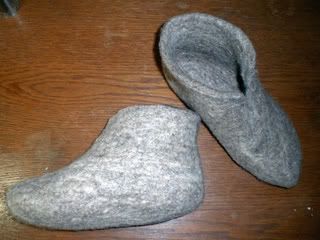
I could have easily stopped here if I wanted a set of house slippers. However, this particular project was to recreate a pair of Medieval ecclesiastic felt ankle boots. I took my inspiration from the boots worn by Bishop William Waynflete, that are now found at Magdalen College in the UK. Seen here: http://www.bodleian.ox.ac.uk/__data/assets/image/0010/36289/56_colleges_web1.jpg The trim pattern was based on other shoes of the time, such as these: http://en.wikipedia.org/wiki/File:Lithurgical_footwear_Str%C3%A4ngn%C3%A4s_cathedral_Sweden.JPG .
The shoes have the felt core, which is covered with fabric and soled with cork. This was my first attempt at making a pair like this. It worked well and looks like the original, but may or may not be accurate in construction. Here's what I did:
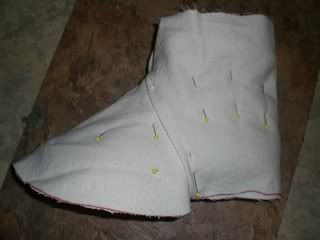
Take some cheap fabric, and pin and fit and pin and cut and pin and...etc...until you get a pattern you like. Keep in mind that the pattern for each shoe might be slightly different, since it is unlikely that each boot is exactly the same size. (Feet are funny that way.)

Weave your fabric. Or, I suppose, you could go to the store and buy some. :)

Cut your fabric according to the muslin pattern. Pin it in place, and sew it down to the felt.

Stand on your cork board (I used cork bulletin board squares from Hobby Lobby), and trace around your feet. Cut enough layers to get the height you want.
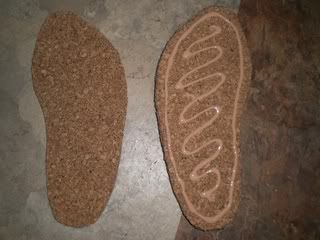
Glue your layers of cork together, and let dry. I used wood glue.
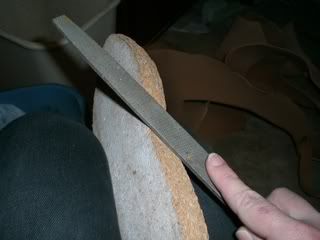
File the edges of your cork insoles nice and smooth.
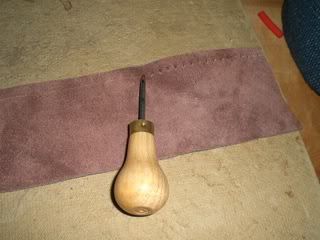
Cut a strip of flexible leather long enough and wide enough to serve as an edging for the cork. Punch your stitching holes.
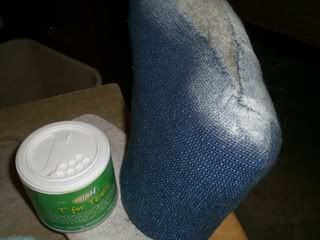
Powder your cork. Put on the felt boots and stand on the cork. That will give you an idea of where the leather edging (or 'rand') will go.
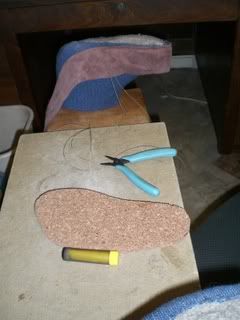
Stitch on the rand, upside down and inside out.
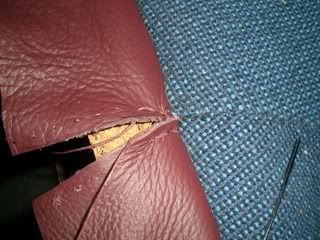
Flip down the rand and cinch the edges together around the cork.
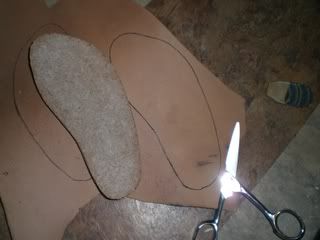
Take the cork back out for a moment, and trace around it on your sole leather. Cut out your soles, with a bit of an extra margin.
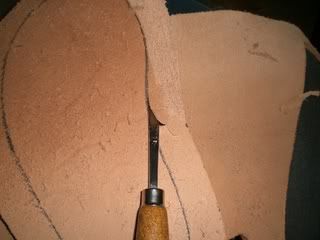
Bevel down the margin on your sole leather.
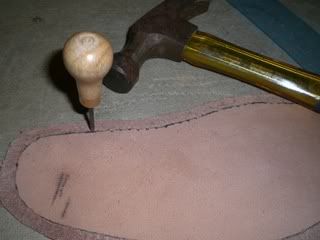
Punch the stitching holes on the soles, right along the tracing line.
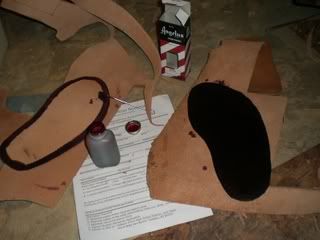
Dye your soles if you want to.
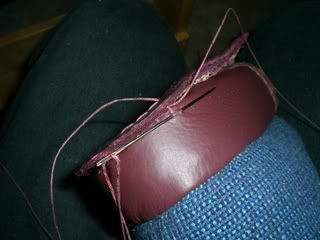
Stitch the soles in place. Next time I'm going to cut a groove along the stitching line first, to recess the thread (waxed linen) below the level of the leather. That will help with the longevity of the shoes. Then trim back the sole a bit, wet it, and press it upward so it rounds up over the edge of the insole to protect that seam.
Now, trim your shoes any way you like, and enjoy!

I found these are not great for tromping around in, because there is no flex to the sole. It is kind of like clomping around in 1970's clogs, but warmer. However, they are awesome for what they were originally intended for: keeping your feet warm and comfortable while standing on cold floors for a long time. I don't need to stand and give sermons in drafty cathedrals, but I do stand to weave on my tri-loom. These boots kept my feet warm and cushioned yesterday while I was working.
Thank you for the tutorial. These would be nice to use during canning season.
ReplyDeleteThank you for sharing. They turned out beautiful.
ReplyDeleteawesome! thanks for your tutorial! how do you stitch the sole? do you have any tutorial on how to sew leather?
ReplyDeletethanks!
xoxox